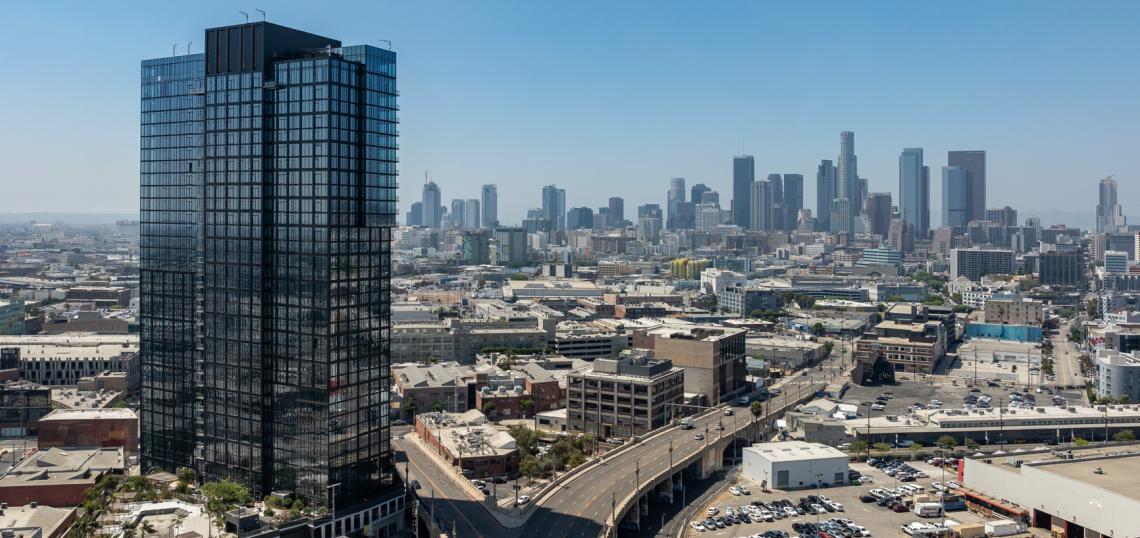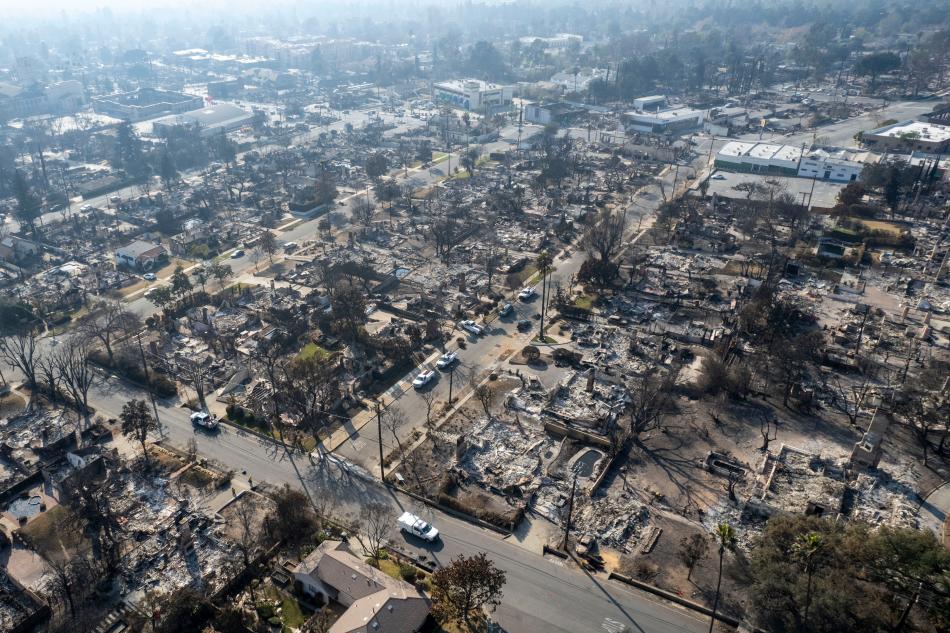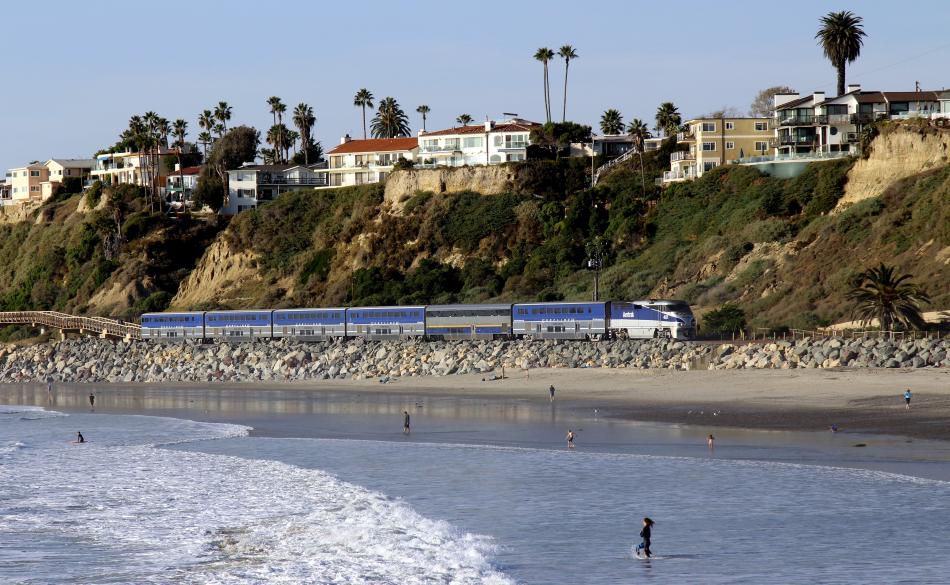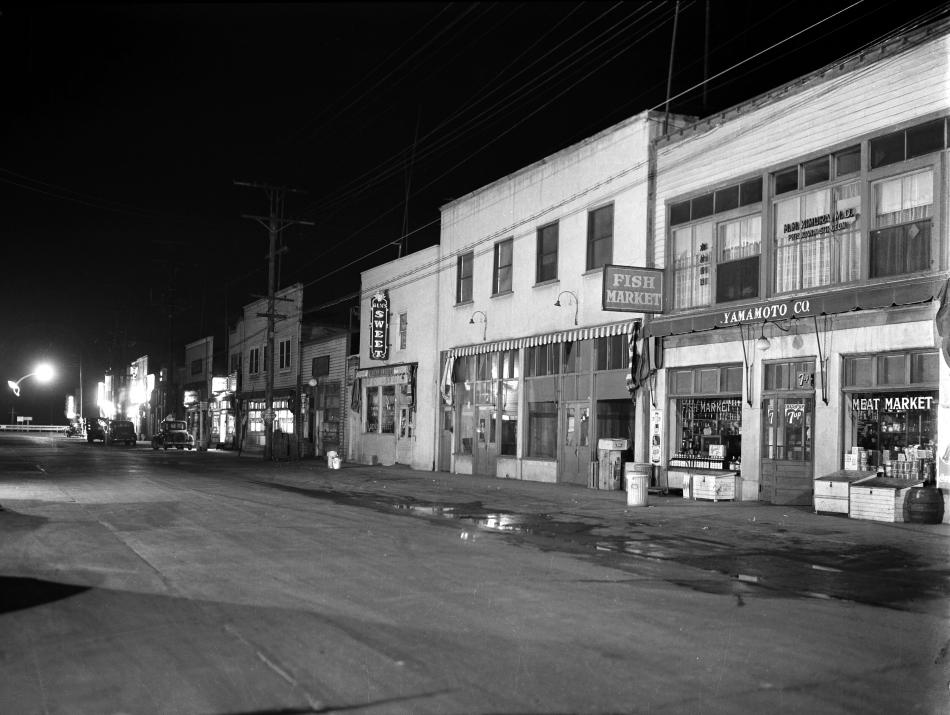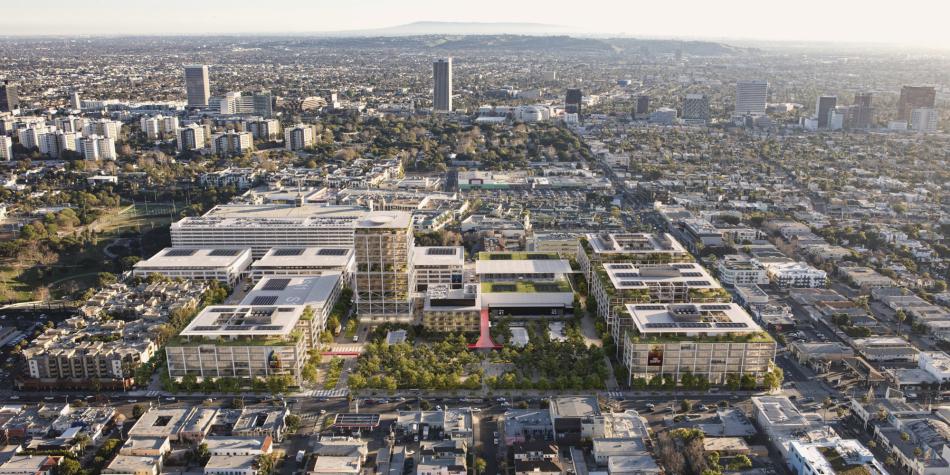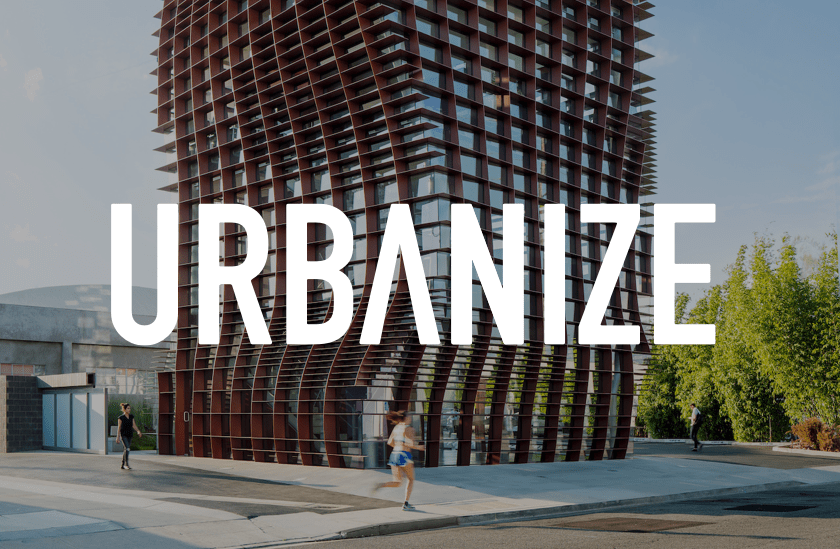Cranes don't quite dot the Downtown skyline the way they used to, but new numbers released as part of the DTLA Alliance's 2024 Year-End Market Report show that it's not all bad out there.
The end of 2024 saw the opening of Alloy, a mixed-use project with 475 apartments which is the Arts District's first high-rise, as well as new supportive housing from the Weingart Center and a 77-unit condo complex in Little Tokyo. New zoning rules adopted through the DTLA 2040 plan are expected to enable up to 100,000 additional homes in the area in the decades ahead.
Residential occupancy is currently estimated at nearly 91 percent, up 1.5 percent from the same time in the prior year. Average rents per units currently stand at just over $2,800 - up roughly the same amount from one year prior. Hotel occupancy rates also improved in 2024, reaching occupancy rates of more than 71 percent - up 3.3 percent from the prior year.
Things were less rosy for the office and retail sectors, with the Downtown office market now showing a 31 percent vacancy rate (a 19 percent increase from the prior year) and retail space nearly 9 percent vacant (up 33 percent year-over-year).
Do you own apartments within 10 miles of Altadena? The Los Angeles County Development Authority and the American Red Cross are asking local property owners with available one- and two-bedroom rental units to help house families displaced by the Eaton Fire, Supervisor Kathryn Barger announced this week.
“We have an immediate need to support wildfire survivors who have been displaced from their homes and want to remain close to their communities,” said Barger in a news release. “Many of these families are struggling to rebuild their lives while ensuring stability for their children. I urge property owners with available units to partner with us and provide a lifeline for those in need.”
Property owners who can help can contact LACDA at (626) 586-1570, (626) 586-1565 or via email at Owner.Services@lacda.org between Monday and Friday from 8:00 a.m. to 5:00 p.m.
The Orange County Transportation Authority's board of directors has voted to move forward with four projects aimed at shoring up the rail line which runs along coastal bluffs in San Clemente.
“This rail line is essential to safely moving passengers and freight, and I’m proud of the work we are doing with strong input from the community and all stakeholders to make sure this vital corridor remains operating smoothly,” said OCTA chair and Orange County Supervisor Doug Chaffee in a news release.
The projects include a catchment wall at Mariposa Point, as well as seawalls, riprap repair, and other measures to address erosion along the rail corridor. Engineering and environmental documentation for the projects should be completed through early 2026 and early 2027.
A long-term fix for the rail corridor - which carries Metrolink trains and Amtrak's Pacific Surfliner - will require relocating the tracks inland. That effort has a multi-billion dollar price tag.
Though it is today a hub of indstury, dominated by freight rail lines and container yards, Terminal Island was once home to a Japanese American fishing village with more than 3,000 residents. World War II and the forced incarceration of persons of Japanese American descent on the West Coast put an end to that community, which was all but completely demolished between 1942 and 1945. Today, just two buildings from that fishing village remain, and if a new motion from City Councilmember Tim McOsker is adopted, they may be added to the list of Los Angeles Historic-Cultural Monuments.
“Japanese fishermen who settled on Terminal Island in the early 20th Century were the initiators and innovators of what eventually became a booming tuna fishing industry in Los Angeles. Yet, the story of these families is also marked by one of the darkest chapters in our nation’s history—a time when an entire community was forcibly removed, their homes and livelihoods destroyed,” said McOsker in a statement. “We must preserve what remains, not only to protect an important part of Los Angeles’ cultural and social history but to honor their contributions and ensure that future generations learn from this past and carry forward their legacy.”
The structures, located at 700-702 Tuna Street and 712-716 Tuna Street, are subject to review by the Cultural Heritage Commission, with final sign-off on landmark status to be decided by the City Council.
According to the Los Angeles Conservancy, 700-702 Tuna Street housed the Nanka Company Dry Goods Store, which was the area's only clothing store prior to World War II. Its neighbor at 712-716 Tuna street was home to the A. Nakamura Company Grocery Store, whose proprietor was arrested in 1942 after the attack on Pearl Harbor.
“The introduction of this motion embraces our overarching goal of significantly honoring the legacy of the Terminal Island Japanese American community from the early 1900s through 1942, who suffered a severe injustice due to President Roosevelt’s Executive Order 9066,” said Paul Hiroshi Boyea of the Terminal Islanders Association and the Terminal Islanders Preservation Initiative. “The two historic Terminal Island buildings on Tuna Street represent culture, family, and American history that should never be forgotten. They are also the last remaining physical remnants from this important era of Japanese American heritage and their significant contributions to California’s fishing industry.”
Here's what we're reading this week:
Nonprofits allege Los Angeles plan to boost housing development is too weak, illegal "In their lawsuit, the groups, Yes In My Back Yard and Californians for Homeownership, allege that the city has not demonstrated its plan can accommodate an additional 255,000 homes as required, in part because the city failed to change the underlying zoning in many neighborhoods." (LA Times)
Reclaiming Urbanism After the L.A. Fires "As charming and beloved as the historic centers of Pacific Palisades and Altadena were, the opportunity to reconsider the single-use land use pattern of both locales stares us in the face. In the Palisades, some of the commercial space was organized in a car-centric pattern, with parking dominating the streetscape. So in the case of the Palisades, we might ask, why can’t the new construction be built to frame and embrace generously sized sidewalks and relegate parking to a less visible location?" (Common Edge)
City of LA to crack down on price gouging amid fire recovery "Under the ordinance, landlords would be prohibited from raising rent by a significant amount during a declared emergency and charging fees for rent-related services such as gardening, parking or utilities that were not previously charged under the prior rental agreement." (Spectrum)
Over $600M in tax dollars will start rolling in soon under Measure A. Here’s how you can weigh in "While Measure A raises the sales tax for homeless services and housing, the first spending plan has an overall cut in spending. County officials say that’s largely due to cuts in state grants and consumers spending less on items subject to sales tax." (LAist)
Drivers Beware: Automatic Bus Lane Parking Tickets Start Next Monday – Feb. 17 "If you drive, don't risk a ticket - don't park in bus lanes or at bus stops." (Streetsblog LA)
After 30 years, In-N-Out leaves corporate office in Orange County "In-N-Out will shutter its Orange County corporate office, where the company has kept offices since 1994, and relocate employees back to Baldwin Park, where its founders first opened a drive-through restaurant in the 1940s." (LA Times)
Rick Caruso wants LA to build faster — just not near his property "Just two days after Caruso embarked upon a press tour touting his red-tape-slashing plan, his other LA mall sued the city to delay the construction of a major job center right next door" (Torched)
Air, soil, water and dust: New study focuses on long-term health impacts of LA wildfire pollution "The study aims to change that by testing the air, soil, water and dust in and around people's homes. The effort is a collaboration led by experts from Harvard, UCLA, UC Davis and the University of Texas." (LAist)
‘Built to burn.’ L.A. let hillside homes multiply without learning from past mistakes "The massive blazes that engulfed Los Angeles hillsides communities Jan. 7, destroying 16,000 structures and killing at least 29 people in and around Pacific Palisades and Altadena, have prompted a new reckoning on how so many L.A. homes came to be built on land so vulnerable to fire and how, or whether, they should be rebuilt." (LA Times)
Their grandfather came to America and opened a nursery. A century later, it’s closing "As Hawthorne Nursery prepares to close, Akiyama said he takes solace in seeing the influence the Nakai family and other Japanese American nursery owners have had when he drives through neighborhoods in Torrance, Gardena and other cities nearby and sees trees cultivated by the nursery owners decades ago." (LA Times)
Follow us on social media:
Twitter / Facebook / LinkedIn / Threads / Instagram / Bluesky




